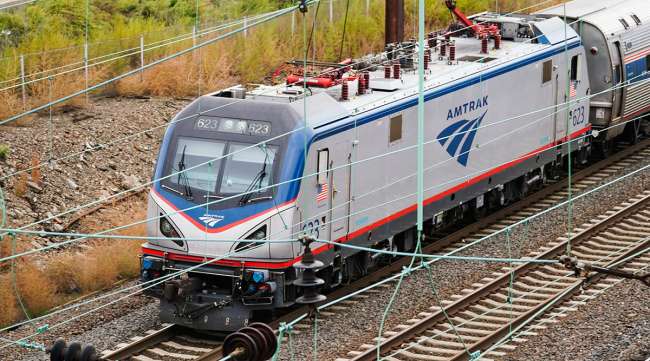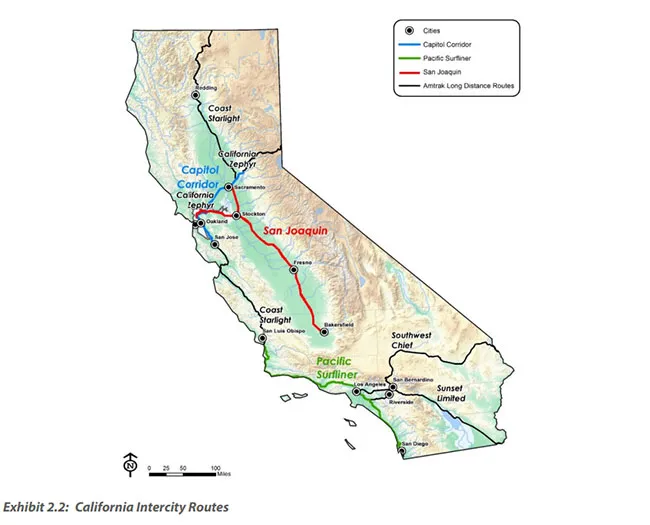Staff Reporter
Amtrak Used 2 Million Gallons of Renewable Diesel in FY2023

[Stay on top of transportation news: Get TTNews in your inbox.]
Switching to renewable diesel has enabled Amtrak to replace more than 2 million gallons of fossil fuel during the past fiscal year and move closer to its goal of achieving zero emissions in two decades, the rail service provider said.
“Passenger rail is widely recognized as one of the most sustainable modes of transportation, and we are taking steps to make rail even more attractive,” said Amtrak CEO Stephen Gardner, touting findings of its recently released Fiscal Year 2023 Sustainability Report.
Transporting 28 million travelers to more than 500 communities, the national passenger railway created a net-zero emission program and is pursuing its first national network plan addressing climate vulnerability assessments and strategies, it said.
Amtrak’s short-term solution to lower emissions is to start using renewable diesel to replace traditional diesel fuel. Chemically equal to conventional diesel, renewable diesel is a drop-in replacement fuel produced with feedstocks, such as agricultural wastes and plant-based oils.

Gardner
This strategy replaced 2 million gallons of traditional diesel fuel with renewable diesel on three of California’s state-supported passenger train lines:
- San Joaquins (between the San Francisco Bay Area and Bakersfield)
- Capitol Corridor (between San Jose and Auburn in the Sacramento Valley)
- Pacific Surfliner (between San Diego and San Luis Obispo)
“The emissions reductions already met and climate goals set forth in the annual report underline our commitment to providing customers safe and reliable travel while further reducing our already low carbon footprint,” Gardner added.

All the renewable diesel Amtrak is using comes from three California routes: San Joaquins, Capital Corridor and Pacific Surfliner. (Amtrak)
Another measure taken last year to lower emissions and diesel usage was to focus on reducing engine idling when locomotives were stationary in rail yards. Amtrak also has adjusted its engine testing to lower diesel fuel use.
Amtrak’s June announcement about its reduced emissions also spotlighted its overall desire to “shift people out of cars and planes” and “double ridership to 66 million by 2040.” It also plans to collaborate on alternative powertrains with industry partnerships to develop and test zero-emission technology in its locomotives.
“Passenger rail is inherently one of the most sustainable travel modes. The path to further reduce and eliminate emissions requires a modal shift from diesel locomotives to alternative propulsion technology,” the sustainability report said. “We recognize the need to move away from fossil fuels in our vehicles, infrastructure and supply chain.”
Amtrak FY23 Sustainability Report
Amtrak experienced record ridership last year along its Virginia, North Carolina and Downeaster (Brunswick, Maine-Boston) routes. In fiscal 2023, Amtrak had 28.6 million customers (up 25% over the previous year) and averaged 78,300 passenger trips daily.
“Amtrak’s total operating revenue in FY23 was $3.4 billion, an increase of 20% over FY22, driven by higher ridership and ticket revenue across all service lines,” Amtrak stated.
Want more news? Listen to today's daily briefing below or go here for more info:




